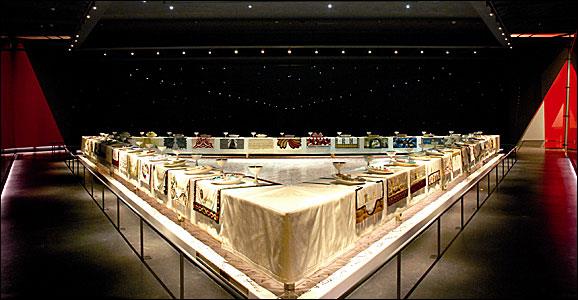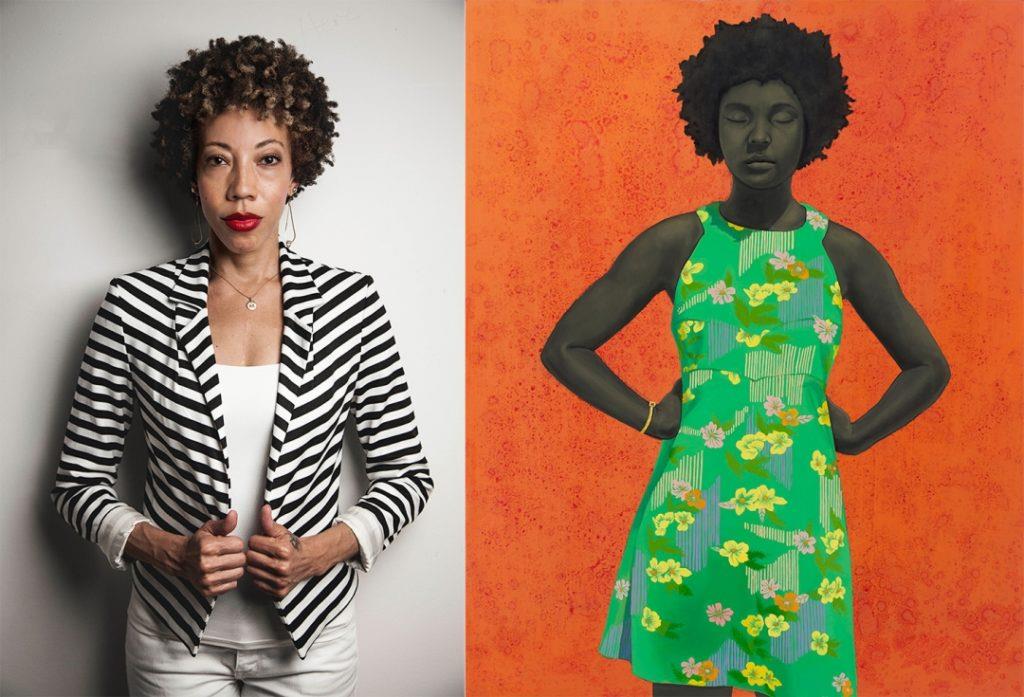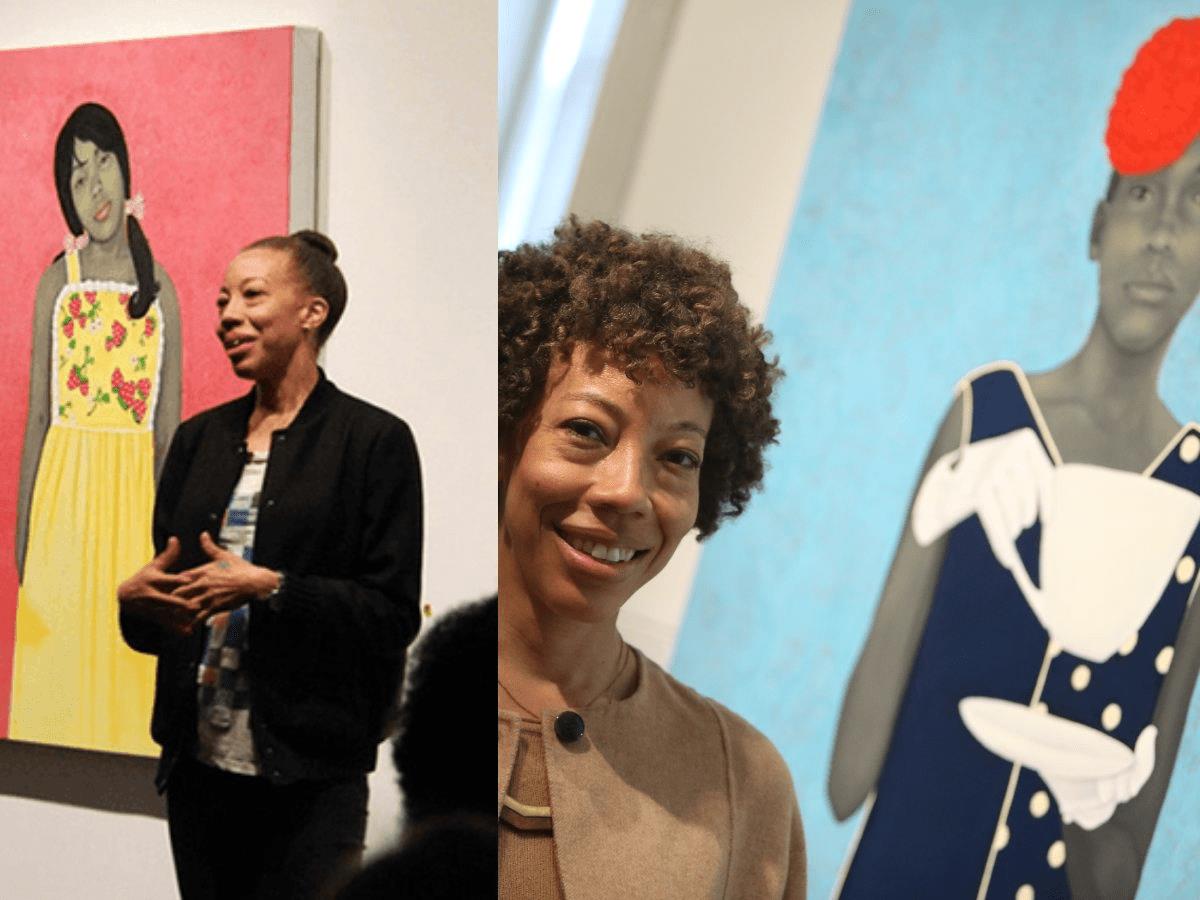
Breaking Barriers: The Impact Of Women Artists In American Art
The journey of women artists in America dates back to the colonial period when figures like Anna Mary Robinson started to gain recognition through their portraiture. However, it wasn't until the 19th century, with the rise of the women's suffrage movement, that women's roles in art began to shift. Artists such as Mary Cassatt and Georgia O'Keeffe emerged, gaining prominence for their explorations into modernism and social issues. Cassatt, known for her intimate depictions of women and children, challenged traditional representations of femininity, while O'Keeffe broke ground with her abstract, evocative interpretations of the American landscape and its flora.

Judy Chicago's monumental installation The Dinner Party (1979)
The early 20th century gave rise to the feminist art movement, which further highlighted the significance of women in art. This movement aimed to address the gender disparities within the art world and encouraged women to express their experiences through their work. Feminist art has continued to evolve, with artists like Judy Chicago and the Guerrilla Girls who emerged in the 1970s and 1980s actively working to raise awareness of the underrepresentation of women artists and the misogyny prevalent in the art industry. Their impact is still palpable today, as evident in art institutions and galleries that increasingly strive to include diverse voices in their programming.
The Feminist Art MovementThe feminist art movement has undoubtedly been a catalyst for change in American art. Artists affiliated with this movement used their creative expressions to confront societal norms and advocate for women's rights. Judy Chicago's monumental installation The Dinner Party (1979) remains a pivotal piece in this dialogue and has become an iconic symbol of female empowerment in art. This collaborative installation featured place settings honoring significant women in history, simultaneously celebrating their achievements and shedding light on their historical marginalization.

Artist Amy Sherald, left, with one of her paintings, right,“The Make Believer (Monet's Garden)” (2016), oil on canvas, 54 x 43 inches. (Private Collection, Chicago).
Another notable figure, the Guerrilla Girls, shined a glaring spotlight on the gender and racial disparities within the art world. Through provocative posters and performances, they challenged institutions to recognize and celebrate women and artists of color. Their work compelled galleries and museums to reassess how they curate, often leading to increased representation of women artists and marginalized groups in exhibitions.
The feminist art movement not only legitimized women's experiences in the art world but also inspired future generations of female artists to embrace their identities and navigate the chaotic territory of gender and power. Groups such as the Wavelengths Collective, formed in the 1990s, worked alongside the feminist art movement, blending activism and art while championing diverse and underrepresented artists.
Expanding RepresentationAs the art scene expands in the 21st century, the conversation surrounding women artists continues to evolve. Institutions are increasingly prioritizing inclusivity and representation, resulting in a renewed focus on providing platforms for women artists in the USA. Initiatives such as the Brooklyn Museum's A Woman's Work: A Midsummer Night's Dream and Other Works by Female Artists exhibition exemplify the art world's commitment to honoring female talent.

Super Blue Omo, 2016 by Njideka Akunyili Crosby. Photograph: Courtesy Norton Museum of Art
Additionally, non-profit organizations like the Women's Caucus for Art (WCA) strive to support women artists, advocate for gender equality in the arts, and bolster the representation of female artists through community engagement, awards, and exhibitions. Their work highlights the ongoing systemic issues women continue to face and emphasizes the importance of collaborative efforts to reshape the art world into a more equitable space.
The Contemporary Landscape
Today's American art scene boasts a wealth of female talent that is redefining boundaries and constantly pushing the envelope. Artists like Kehinde Wiley, who explores themes of race, identity, and representation, often collaborate with women artists to ensure diversity in their narratives. The rise of social media also plays an essential role in democratizing access to art, allowing women artists to reach wider audiences and gain recognition beyond traditional galleries.
Artists like Amy Sherald and Njideka Akunyili Crosby have taken center stage, using their art to reflect on identity, culture, and race. Their work challenges conventional notions of beauty and representation, showcasing the depth and complexity of modern societal issues while giving visibility to previously unrepresented perspectives.
Furthermore, the ongoing rise of queer and trans artists who identify as women is reshaping the conversation surrounding gender and identity in contemporary art. Artists like Juliana Huxtable actively interrogate the intersections of race, gender, and sexuality, pushing for expanded dialogues within art communities. Their work contributes to a broader understanding of the multiplicity of women's experiences and identities.
The impact of women artists in American art can no longer be ignored; their contributions have been pivotal in shaping the art landscape throughout history. From the early pioneers who redefined femininity in art to the contemporary voices challenging societal norms, the journey of female artists continues to inspire and provoke change.
As the art world progresses, it becomes increasingly essential to elevate and celebrate the stories of women artists, recognizing not only the barriers they have broken but also the innovative pathways they continue to forge. The future of American art lies in this commitment to inclusivity, paving the way for a more diverse and representative narrative that honors the invaluable impact of women artists in shaping the creative landscape of our time. Breaking barriers is more than a campaign; it is a call to action to recognize and amplify the voices of women who have always been at the forefront of American culture and expression.

Legal Disclaimer:
MENAFN provides the information “as is” without warranty of any kind. We do not accept any responsibility or liability for the accuracy, content, images, videos, licenses, completeness, legality, or reliability of the information contained in this article. If you have any complaints or copyright issues related to this article, kindly contact the provider above.






















Comments
No comment